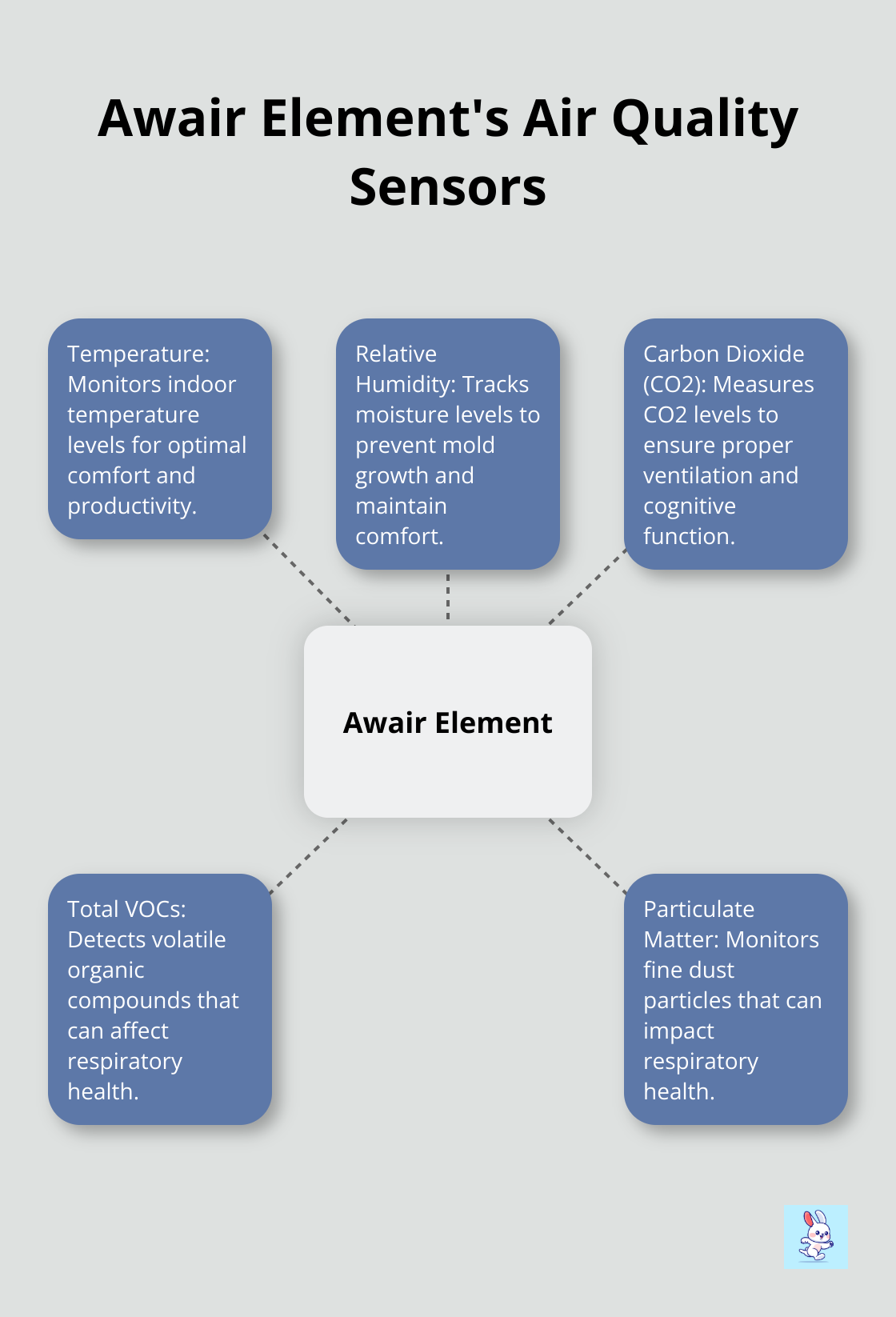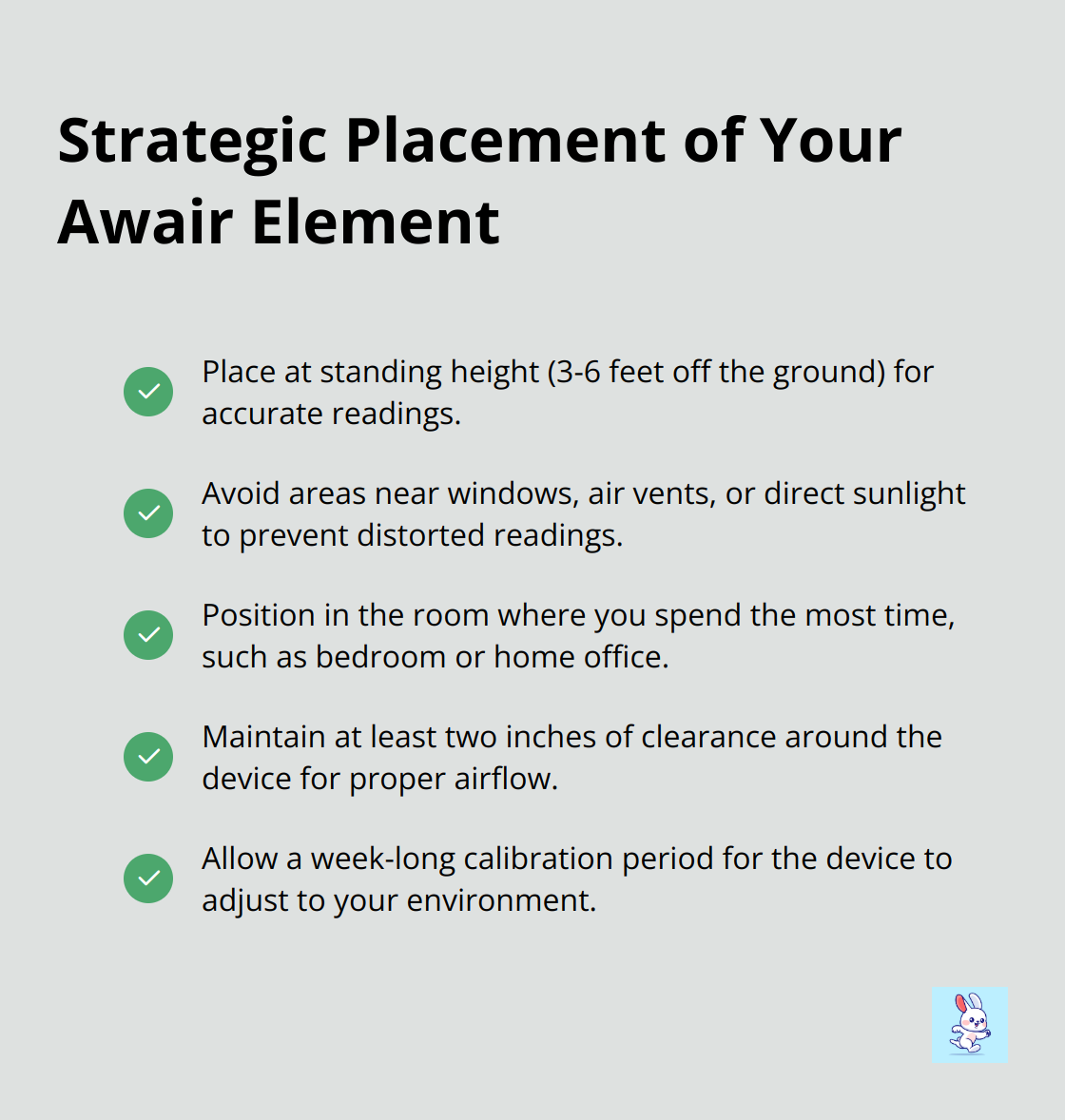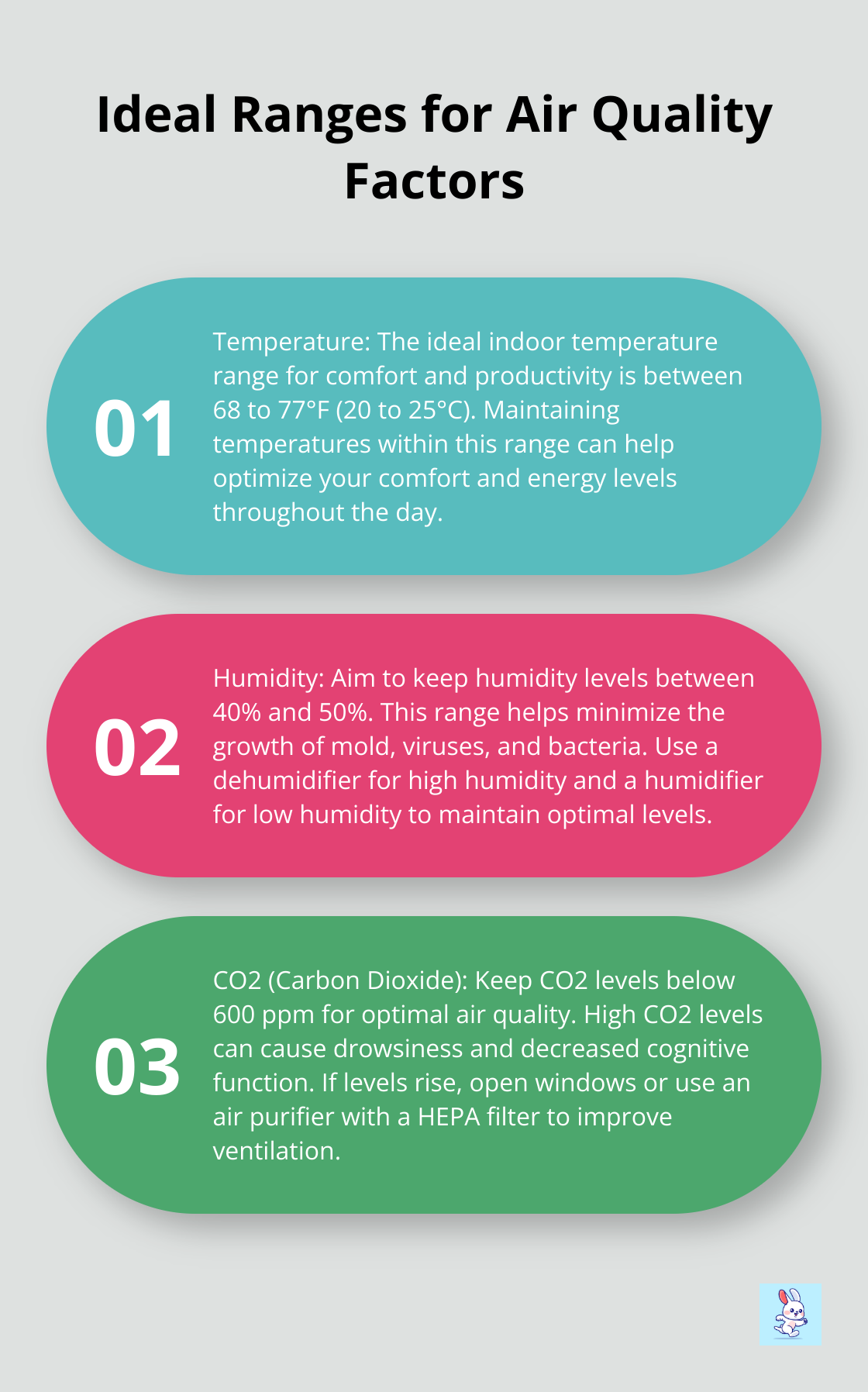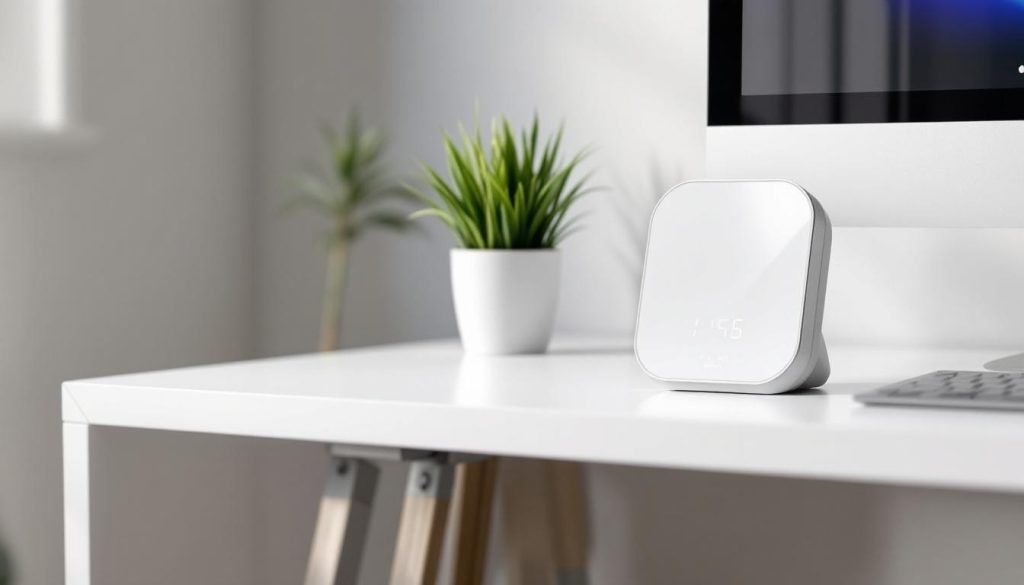At Cleaning Rabbit, we know that indoor air quality can significantly impact your health and well-being. That’s why we’re excited to introduce you to the Awair Element indoor air quality monitor.
This powerful device helps you track and improve the air you breathe at home or in your office. In this post, we’ll show you how to make the most of your Awair Element and create a healthier living environment.
What Does the Awair Element Do?
Comprehensive Air Quality Monitoring
The Awair Element stands as a compact powerhouse for indoor air quality monitoring. This device tracks five primary sensors: temperature, relative humidity, carbon dioxide (CO2), total VOCs, and particulate matter. Through continuous monitoring of these elements, you can make informed decisions to improve your living or working space.

Real-Time Air Quality Display
The Awair Element provides instant data on your indoor environment. Its LED display shows your current Awair Score, a number from 0 to 100 that represents overall air quality. This score uses a color-coded system for quick understanding: green indicates good, orange suggests fair, and red warns of poor air quality. You can check this score at a glance, which allows you to stay informed about your air quality throughout the day.
In-Depth Air Quality Insights
While the Awair Score offers a quick overview, the Awair Home App presents detailed insights into each air quality factor. You can view trends over time, which helps you identify patterns in your indoor air quality. For example, you might notice that CO2 levels increase during your weekly game night, indicating a need for improved ventilation when you host guests.
Tailored Recommendations
A standout feature of the Awair Element is its ability to provide personalized recommendations. The app suggests specific actions based on your air quality data to improve your environment. These suggestions might include opening windows to lower CO2 levels, using a dehumidifier to control excess moisture, or identifying and removing sources of VOCs in your home.
Proactive Approach to Health
The Awair Element empowers you to take an active role in managing your indoor air quality. This proactive approach can lead to numerous benefits, from improved sleep and increased productivity to reduced allergy symptoms and enhanced overall well-being.
As we move forward, let’s explore how to set up and use your Awair Element effectively to maximize its potential in improving your indoor air quality.
Setting Up Your Awair Element for Optimal Performance
Unboxing and Initial Setup
When you first receive your Awair Element, you’ll find the device, a USB cable, and a power adapter in the box. To start, connect the USB cable to the device and plug it into the power adapter. Then, insert the adapter into a wall outlet. The Awair Element will automatically power on, and you’ll see the LED display illuminate.
Wi-Fi Connection Process
After powering on your device, you’ll need to connect it to your home Wi-Fi network. First, download the Awair Home App from your device’s app store. Open the app and create an account or log in if you already have one. The app will provide step-by-step instructions to connect your Awair Element to your Wi-Fi network. This connection is essential for accessing real-time data and historical trends on your smartphone.
Strategic Device Placement
The location of your Awair Element can significantly affect its readings. For the most accurate results, place the device at standing height (approximately 3-6 feet off the ground). Avoid areas near windows, air vents, or in direct sunlight, as these can distort the readings. It’s best to position the Awair Element in the room where you spend the most time (such as your bedroom or home office). Give Awair at least two inches of clearance from walls or other objects on front and back side. Placing your Awair in a crowded space may skew its readings.

Ensuring Proper Airflow
To allow the sensors to accurately sample the air in your room, maintain at least two inches of clearance around the device. This space is critical for proper airflow and precise measurements. You can move the device to different rooms to get a comprehensive understanding of your home’s air quality.
Calibration Period
After setting up your Awair Element, allow a calibration period of about a week. During this time, the device will adjust to your specific environment and provide increasingly accurate readings. It’s a good idea to expose the device to fresh air at least once during this initial period (and regularly thereafter) to maintain consistent air quality readings.
Now that you’ve set up your Awair Element correctly, you’re ready to start interpreting the data it provides. In the next section, we’ll explore how to understand and use this information to improve your indoor air quality effectively.
How to Interpret Your Awair Element Data
Decoding the Awair Score
The Awair Score provides a quick snapshot of your overall air quality. This score ranges from 0 to 100, with 100 indicating ideal air quality. The score uses a color-coded system for easy interpretation: green (good), orange (fair), or red (poor).
Awair Element calculates this score based on five air quality factors: temperature, humidity, CO2, chemicals (VOCs), and fine dust (PM2.5). Each factor carries a different weight depending on its impact on health and comfort.
Understanding Individual Air Quality Factors

Temperature
The ideal indoor temperature range for comfort and productivity falls between 20 to 25°C (68 to 77°F). Temperatures outside this range can affect your comfort and energy levels.
Humidity
Try to maintain humidity levels between 40% and 50%. This range helps minimize the growth of mold, viruses, and bacteria. For high humidity, use a dehumidifier. For low humidity, a humidifier can help.
CO2
Keep CO2 levels below 600 ppm for optimal air quality. High CO2 levels can cause drowsiness and decreased cognitive function. If CO2 levels rise, open windows or use an air purifier with a HEPA filter.
Chemicals (VOCs)
Maintain total VOC levels at or below 300 ppb. High VOC levels can cause headaches and respiratory irritation. To reduce VOCs, use low or zero-VOC paints and cleaning products, and ensure proper ventilation when cooking or using chemical products.
Fine Dust (PM2.5)
Air pollution is now estimated to be on a par with other major global health risks such as unhealthy diets. Regular cleaning, air purifiers, and HVAC system maintenance can help control PM2.5 levels.
Applying Insights to Improve Your Environment
The Awair Home App offers personalized recommendations based on your air quality data. These actionable tips can help you make immediate improvements to your indoor environment.
For example, if your CO2 levels are high, the app might suggest opening windows or using a fan to improve air circulation. If VOC levels spike, it might recommend identifying and removing potential sources (such as new furniture or cleaning products).
Pay attention to patterns in your air quality data. You might notice that PM2.5 levels increase when you cook, signaling a need for better kitchen ventilation. Or you might see CO2 levels rise during gatherings, indicating it’s time to open windows or use an air purifier.
Improving indoor air quality requires ongoing effort. Check your Awair Element data regularly and make adjustments as needed. Consistent application of the insights from your Awair Element will create a healthier, more comfortable living environment.
Final Thoughts
The Awair Element indoor air quality monitor empowers you to create healthier living spaces. It tracks temperature, humidity, CO2, VOCs, and PM2.5, providing a comprehensive view of your indoor environment. The device’s real-time display and detailed app insights enable you to make informed decisions about your air quality.
Maintaining good indoor air quality requires continuous effort. You should check your Awair Element data regularly and act on its recommendations. Open windows, use air purifiers with HEPA filters, and choose low-VOC products for cleaning and home improvement (your lungs will thank you).
Professional cleaning services can further enhance your indoor environment. At Cleaning Rabbit, we offer air duct cleaning, dryer vent cleaning, and HVAC sanitation. Our expertise complements your air quality monitoring efforts, ensuring a healthier home or office space.

